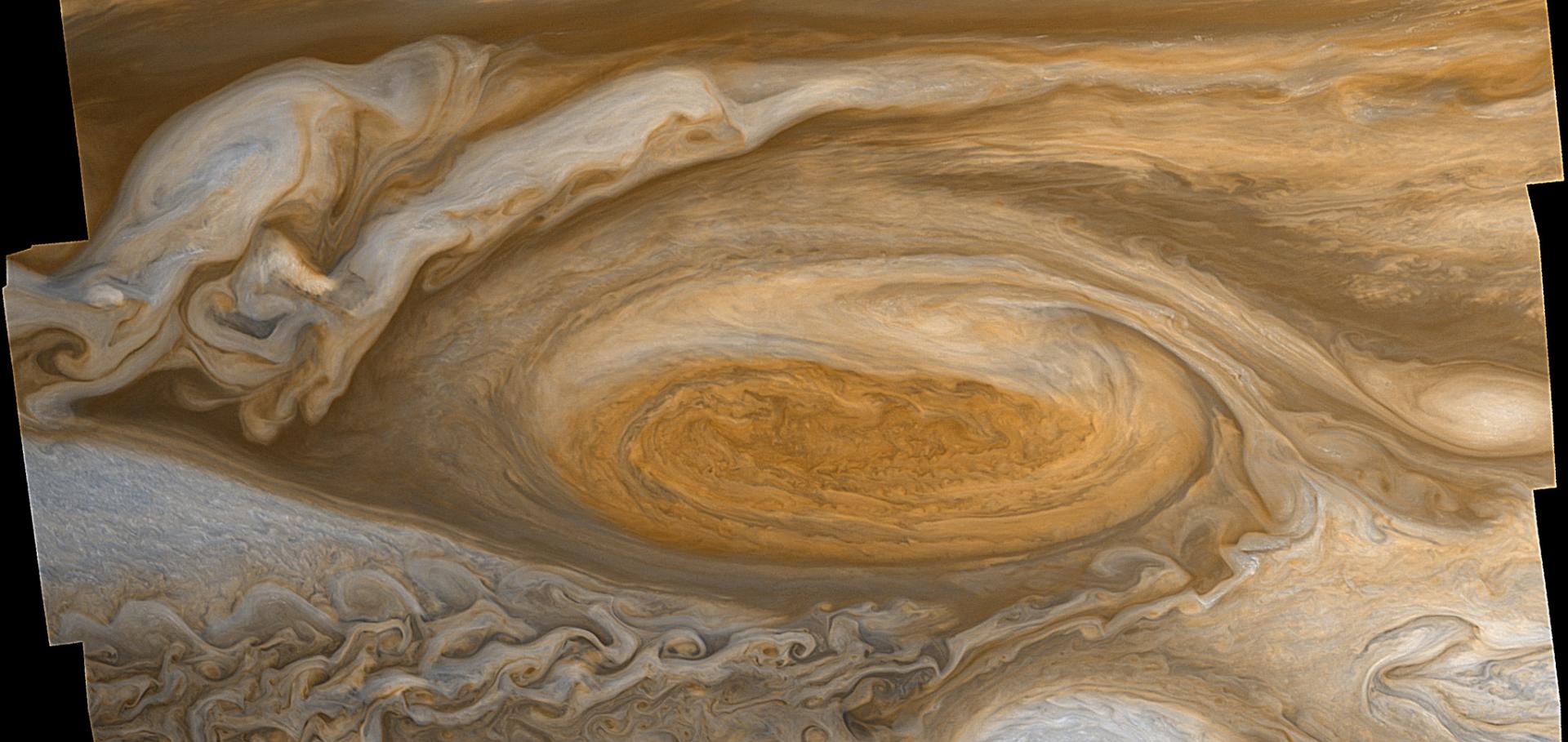Potential Vorticity of Saturn's Polar Regions: Seasonality and Instabilities
Journal of Geophysical Research: Planets American Geophysical Union (AGU) (2019)
Simulating Jupiter’s weather layer. Part I: Jet spin-up in a dry atmosphere
Icarus Elsevier 326 (2018) 225-252
Abstract:
We investigate the dynamics of Jupiter's upper troposphere and lower stratosphere using a General Circulation Model that includes two-stream radiation and optional heating from below. Based on the MITgcm dynamical core, this is a new generation of the Oxford Jupiter model [Zuchowski, L.C. et al., 2009. Plan. Space Sci., 57, 1525--1537, doi:10.1016/j.pss.2009.05.008]. We simulate Jupiter's atmosphere at up to 0.7 degree horizontal resolution with 33 vertical levels down to a pressure of 18 bar, in configurations with and without a 5.7 W/m2 interior heat flux. Simulations ran for 130000-150000 days to allow the deep atmosphere to come into radiative equilibrium. Baroclinic instability generates alternating, eddy-driven, midlatitude jets in both cases. With interior heating the zonal jets migrate towards the equator and become barotropically unstable. This generates Rossby waves that radiate away from the equator, depositing westerly momentum there via eddy angular momentum flux convergence and spinning up a super-rotating 20 m/s equatorial jet throughout the troposphere. There are 30-35 zonal jets with latitudinal separation comparable with the real planet, and there is strong eddy activity throughout. Without interior heating the jets do not migrate and a divergent eddy angular momentum flux at the equator spins up a broad, 50 m/s sub-rotating equatorial jet with weak eddy activity at low latitudes.Comparative terrestrial atmospheric circulation regimes in simplified global circulation models: II. energy budgets and spectral transfers
Quarterly Journal of the Royal Meteorological Society Wiley 144:717 (2018) 2558-2576
Abstract:
The energetics of possible global atmospheric circulation patterns in an Earth-like atmosphere are explored using a simplified GCM based on the University of Hamburg’s Portable University Model for the Atmosphere (designated here as PUMA-S), forced by linear relaxation towards a prescribed temperature field and subject to Rayleigh surface drag and hyperdiffusive dissipation. Results from a series of simulations, obtained by varying planetary rotation rate Ω with an imposed equator-to-pole temperature difference, were analysed to determine the structure and magnitude of the heat transport and other contributions to the energy budget for the time-averaged, equilibrated flow. These show clear trends with rotation rate, with the most intense Lorenz energy cycle for an Earth-sized planet occurring with a rotation rate around half that of the present day Earth (i.e. Ω* = Ω/ΩE = 1/2, where ΩE is the rotation rate of the Earth). KE and APE spectra, EK(n) and EA(n) (where n is total spherical wavenumber), also show clear trends with rotation rate, with n^-3 enstrophy-dominated spectra around Ω* = 1 and steeper (~ n^-5) slopes in the zonal mean flow with little evidence for the n^-5/3 spectrum anticipated for an inverse KE cascade. Instead, both KE and APE spectra become almost flat at scales larger than the internal Rossby radius, Ld, and exhibit near-equipartition at high wavenumbers. At Ω* << 1, the spectrum becomes dominated by KE with EK(n) ~ (2 - 3)EA(n) at most wavenumbers and a slope that tends towards n^-5/3 across most of the spectrum. Spectral flux calculations show that enstrophy and APE are almost always cascaded downscale, regardless of rotation rate. KE cascades are more complicated, however, with downscale transfers across almost all wavenumbers, dominated by horizontally divergent modes, for Ω* ≲ 1/4. At higher rotation rates, transfers of KE become increasingly dominated by rotational (horizontally non-divergent) components with strong upscale transfers (dominated by eddy-zonal flow interactions) for scales larger than Ld and weaker downscale transfers for scales smaller than Ld.Atmospheric dynamics of terrestrial planets
Chapter in Handbook of Exoplanets, (2018) 385-315
Abstract:
The solar system presents us with a number of planetary bodies with shallow atmospheres that are sufficiently Earth-like in their form and structure to be termed "terrestrial. " These atmospheres have much in common, in having circulations that are driven primarily by heating from the Sun and radiative cooling to space, which vary markedly with latitude. The principal response to this forcing is typically in the form of a (roughly zonally symmetric) meridional overturning that transports heat vertically upward and in latitude. But even within the solar system, these planets exhibit many differences in the types of large-scale waves and instabilities that also contribute substantially to determining their respective climates. Here we argue that the study of simplified models (either numerical simulations or laboratory experiments) provides considerable insights into the likely roles of planetary size, rotation, thermal stratification, and other factors in determining the styles of global circulation and dominant waves and instability processes. We discuss the importance of a number of key dimensionless parameters, for example, the thermal Rossby and the Burger numbers as well as nondimensional measures of the frictional or radiative timescales, in defining the type of circulation regime to be expected in a prototypical planetary atmosphere subject to axisymmetric driving. These considerations help to place each of the solar system terrestrial planets into an appropriate dynamical context and also lay the foundations for predicting and understanding the climate and circulation regimes of (as yet undiscovered) Earth-like extrasolar planets. However, as recent discoveries of "super-Earth" planets around some nearby stars are beginning to reveal, this parameter space is likely to be incomplete, and other factors, such as the possibility of tidally locked rotation and tidal forcing, may also need to be taken into account for some classes of extrasolar planet.A Hexagon in Saturn's Northern Stratosphere Surrounding the Emerging Summertime Polar Vortex
(2018)


